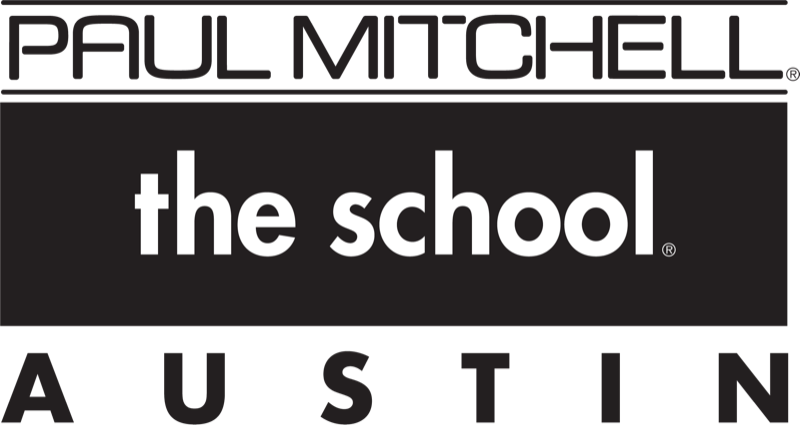COSMETOLOGY OPERATOR TO CLASS A BARBER COURSE DESCRIPTION
Cosmetology Operator to Class A Barber: Standard Occupational Classification (SOC) 39-5011.00
Classification of Instructional Programs (CIP ) Code 12.0402
The curriculum involves 300 hours (with a cosmetology license) to satisfy Texas state requirements. The program includes extensive instruction and practical experience in men’s cutting, hair coloring, perming, men’s grooming, customer service, personal appearance and hygiene, personal motivation and development, retail skills, client record keeping, and business ethics, as well as sanitation, state laws and regulations, salon-type administration, and job interviewing.
*Graduates will be prepared for an entry level barber.
This course is taught in English. Textbooks and course materials are only offered in the English Language.
COSMETOLOGY OPERATOR TO CLASS A BARBER EDUCATION GOALS
Paul Mitchell The School Austin strives to provide a quality educational system that prepares students to pass the state board examination and gain employment within their chosen field of study. Our quality education system includes an outstanding facility, experienced and competent instructors, and a curriculum developed through years of experience and expertise. Our education goals are:
- To educate students to be professional, knowledgeable, and skilled in their field for marketability within the industry.
- To maintain an updated program that provides students with the knowledge to compete in their field of study.
- To promote the continuing educational growth of our faculty and students, using current teaching methods and techniques.
- To teach courtesy and professionalism as the foundation for a successful career in their chosen field of study.
- To prepare students to successfully pass the state licensing exam for entry-level employment.
- To train and graduate students while empowering them to become confident and excited to enter a successful career within the salon and beauty industry.
COSMETOLOGY OPERATOR TO CLASS A BARBER COURSE OVERVIEW
Course Hours: 300 clock hours
- Pre-clinical Classroom Instruction: The first 100 hours are devoted to classroom workshops where students learn design principles, technical information, and professional practices.
- Clinic Classroom Learning Experience: The remaining 200 hours are spent in the clinic classroom where practical experience is gained.
COSMETOLOGY OPERATOR TO CLASS A BARBER COURSE OUTLINE
Your time in the Paul Mitchell The School Austin Cosmetology Operator to Class A Barber course will be divided into two designations:
- Clinic Classroom Learning Experience: Your clinic classroom time will be guided with individual attention and group learning experiences using mini-classes, monthly worksheets, and periodic evaluations developed specifically for monitoring progress. This is when you begin experiencing your clinic classroom education on paying clients in the clinic classroom area.
- Classroom Learning Experience: Your classroom time areas: cutting, coloring, texture, makeup, skin, and nails. Each area has an instructor who conducts the different specialty classes each week; Classroom Learning Experiences may also include retail, motivation, self-improvement, professional development, and attendance education which may be conducted by an instructor, non-licensed staff member or guest artist.
COSMETOLOGY OPERATOR TO CLASS A BARBER COURSE SUBJECTS
The instructional program of Paul Mitchell The School Austin meets or exceeds the state requirements. A person holding the cosmetology operator license who seeks to also obtain the class A barber license must complete the requirements listed below.
| Subject | Hours |
|---|---|
| The standards for the class A barber curriculum must include Specialty Practice and related theory: shaving with any razor type and razor techniques; mustache and beard care; advanced hair care and men's haircutting; and related practices. | 300 |
| TOTAL CLOCK HOURS | 300 |
The institution offers employment assistance to help graduates’ efforts to secure education-related employment that includes, but is not limited to training in professionalism, resume’ development, job interview preparation and job search skills.
COSMETOLOGY OPERATOR TO CLASS A BARBER PROGRAM TESTING AND GRADING PROCEDURE
The following tests and grading procedures are used to assess student learning and mastery of course content in the 300-hour course:
- Academic Theory exams: Students must receive a grade of 70% or higher on each assigned theory exam.
- Final exam 2: The written exam covers an overview of all theory instruction, Texas state law, and other items covered on the state barbering exam. Students must receive a grade of 70% or higher on all final exams.
- Clinic classroom practical worksheets: Students must complete all Clinic Classroom Practical worksheet.
A = 90 – 100% B = 80 – 89% C = 70 – 79% Failing = Below 70%
COSMETOLOGY OPERATOR TO CLASS A BARBER INSTRUCTIONAL TECHNIQUES AND METHODS
The Cosmetology Operator to Class A Barber 300 clock hour course is provided through a sequential set of learning steps which address specific tasks necessary for State Board preparation, graduation and job entry level skills. Clinic equipment, implements and products are comparable to those used in the industry. Each student will receive instruction that relates to the performance of useful, creative and productive career oriented activities. The course is presented through well-developed lesson plans that reflect the latest educational methods. Subjects are presented by means of lecture, demonstration, and student participation. Audio-visual aids, guest speakers, field trips, and other related learning methods are used in the course.
